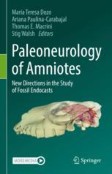Search
Search Results
-
Hematology and biochemistry reference intervals in chemically immobilized free-ranging giant anteaters (Myrmecophaga tridactyla)
The giant anteater ( Myrmecophaga tridactyla ) is classified as a vulnerable species but is commonly received in rescue centers and zoos. Establishing...

-
Outbreak of canine distemper and coinfections in a maned wolf (Chrysocyon brachyurus) and in three giant anteaters (Myrmecophaga tridactyla)
Canine distemper outbreak and coinfections in three giant anteaters and in a maned wolf has been described. Three giant anteaters developed...

-
Ophthalmology of Xenarthra: Armadillos, Anteaters, and Sloths
Xenarthra (from Ancient Greek, meaning xénos, “foreign, alien” +árthron, “joint”) is a superorder of placental mammals that originated in South...
-
Do telemetry harnesses affect giant anteater (Myrmecophaga tridactyla) behavior and welfare?
Telemetry provides researchers with invaluable data and has contributed to the progress of animal ecology and behavioral studies. However, the impact...

-
Bridging the gap between movement data and connectivity analysis using the Time-Explicit Habitat Selection (TEHS) model
BackgroundUnderstanding how to connect habitat remnants to facilitate the movement of species is a critical task in an increasingly fragmented world...

-
Xenarthrans of Brazilian Amazonia: Recent Discoveries, Knowledge Gaps, and Conservation Concerns
Here, I summarize the recent changes in xenarthran taxonomy, analyze past collection efforts, and discuss knowledge gaps in Amazonian xenarthrans....
-
No evidence of sex-related differences in the diet of giant anteater in the Brazilian savanna
Relationships between species and their habitat are strongly related to their feeding habits making its description essential for understanding the...

-
Description of a fetal skeleton of the extinct sloth Nothrotherium maquinense (Xenarthra, Folivora): Ontogenetic and palaeoecological interpretations
A well-preserved fetus of the extinct nothrotheriid sloth Nothrotherium maquinense , recovered in situ within the skeletal remains of its mother from...

-
Flexible conservatism in the skull modularity of convergently evolved myrmecophagous placental mammals
BackgroundThe skull of placental mammals constitutes one of the best studied systems for phenotypic modularity. Several studies have found strong...

-
Physical capture and chemical immobilization procedures for a mammal with singular anatomy: the giant anteater (Myrmecophaga tridactyla)
The giant anteater ( Myrmecophaga tridactyla ), the largest representative of the xenarthrans, is listed as Vulnerable-IUCN. Their unique anatomy and...

-
Integrative Approach Uncovers New Patterns of Ecomorphological Convergence in Slow Arboreal Xenarthrans
Identifying ecomorphological convergence examples is a central focus in evolutionary biology. In xenarthrans, slow arboreality independently arose at...

-
Functional or Vestigial? The Genomics of the Pineal Gland in Xenarthra
Vestigial organs are historical echoes of past phenotypes. Determining whether a specific organ constitutes a functional or vestigial structure can...

-
Effects of oil palm and human presence on activity patterns of terrestrial mammals in the Colombian Llanos
The ability of animals to adjust their behaviour can influence how they respond to environmental changes and human presence. We quantified activity...

-
Microbiome composition and presence of cultivable commensal groups of Southern Tamanduas (Tamandua tetradactyla) varies with captive conditions
Southern Tamanduas ( Tamandua tetradactyla ) belong to the specialized placental myrmecophages. There is not much information about their intestinal...

-
Xenarthra richness and activity pattern in the Brazilian Amazon
The Amazon Forest comprises one of the richest biodiversities area on the planet, but is highly threatened from habitat fragmentation and loss. Among...

-
Ulna of Extant Xenarthrans: Shape, Size, and Function
Xenarthra, one of the major clades of placentals, comprises two different lineages (sloths and anteaters, and armadillos) with extant representatives...

-
Hind Limb Bone Proportions Reveal Unexpected Morphofunctional Diversification in Xenarthrans
Divergence in forelimb morphology is often associated with functional habits exhibited within the Xenarthra, ranging from terrestrial-digging in...

-
The Endocranial Cavities of Sloths (Xenarthra, Folivora): Insights from the Brain Endocast, Bony Labyrinth, and Cranial Sinuses
Folivora (sloths) constitutes a taxonomically rich group comprised of many extinct representatives and a few living forms. The clade also shows...
-
A Review on the Ecology, Conservation and Current Research Priorities of Indian Pangolins Manis crassicaudata in South Asia with Special Emphasis to India
Today the conservation concern is focused on charismatic carnivores like snow leopards, tigers and many others, whereas many endangered small mammals...

-
Food preference of nine-banded armadillo (Dasypus novemcinctus, Linnaeus, 1758) under human care
This study aims to evaluate the food preference of nine banded armadillos kept in captivity, exposed to four different diets: Diet 1 (D1) - dry dog...
